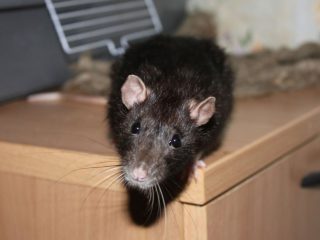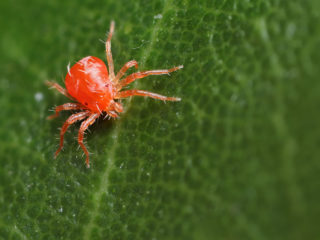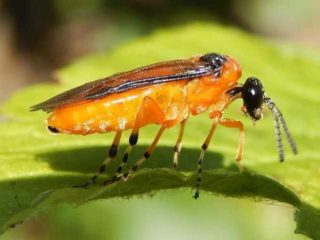Content
A huge problem for a novice gardener can be the withering of iris buds. To find out the reason, it is necessary to examine the peduncle. The mucous contents and larvae inside the flower indicate an iris fly infestation. If no measures are taken in a timely manner, the crop may die. Methods of combating iris fly include the use of insecticides and folk remedies.
What does an iris fly look like?
Iris flies or flower flies (Anthomyiidae) are representatives of the family of dipterous insects from the superfamily of true flies. Outwardly they resemble common flies. The difference lies in the color. The iris fly (pictured) has a light black body with small yellow spots. She sneaks into the bud in early May and remains there until mating.
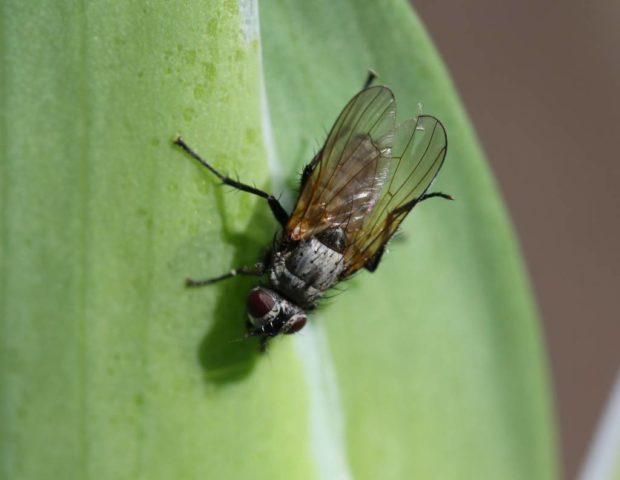
The pest feeds on unblown iris petals.
After fertilization has occurred, the flower girl lays eggs in the bud and leaves it. Blue-white larvae remain in the flower and feed on the sap of the plant. Parasitization of the flower girl leads to the fact that the bud never opens.From above, the inflorescences appear dried out, but inside they turn out to be rotten. If the bud is not cut off and destroyed, the larvae fall under the bush, pupate and overwinter in the leaf litter. In spring, the biological cycle of the iris fly repeats.
Causes and signs of damage to irises by iris fly
The cause of iris fly damage is a warm climate. The larvae that find themselves in the ground under leaf litter pupate and successfully survive the winter, and in the spring new insects emerge from them. In regions with harsh climates, iris flies cannot survive the winter, so they can rarely be found in a flower bed.
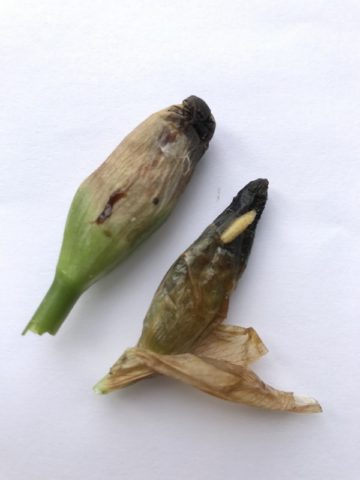
The greatest damage is caused by the larvae of the iris fly.
Mid- and late-flowering varieties most often suffer. The peduncle initially develops as usual, but does not bloom.
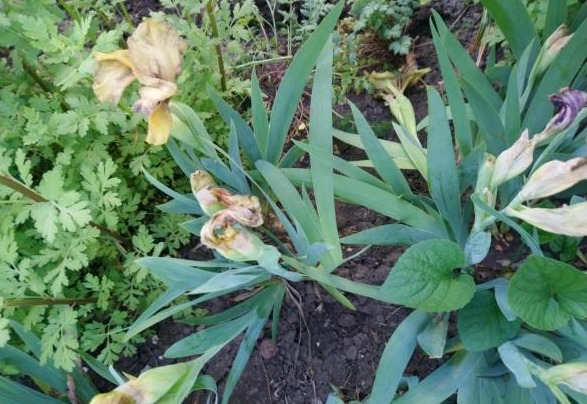
The majority of buds damaged by the iris fly do not open
When palpated, they resemble a soft substance. Blooming flowers also become deformed: their petals quickly curl and their buds dry out.
You can notice the appearance of iris flies by spots on the edges of the petals. This occurs due to the fact that the insect makes a puncture with its proboscis and feeds on the sap of the plant. In addition, green discharge can be seen on the surface of the flowers. The struggle at this moment comes down to pruning and destroying flowers.
Infestations of iris flies are observed in regions with warm climates and mild winters. Gardeners note that hybrid varieties bred by crossing suffer from these insects.
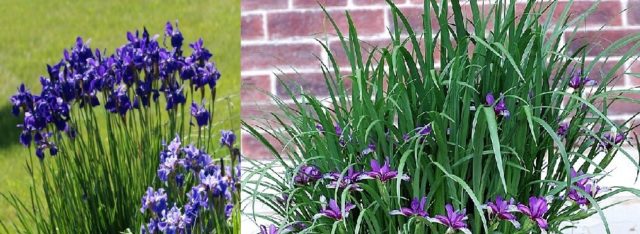
Some types of irises, for example, Siberian, grass-like, are not attacked by the flower girl, even if they are in the same flowerbed with infected hybrids
When and how to deal with iris fly
Getting rid of pests requires more than just insecticide treatment. The fight against insect infestations involves digging up the area, collecting and burning leaves, and using folk remedies.
Spraying at the time of budding may not produce results. It is advisable to carry out the treatment during the period when the flower arrow just appears from the rhizome. Repeated spraying is carried out during the formation of flower buds; it is necessary to do so before they become colored.
If, when examining the peduncles, there is a suspicion of the appearance of an iris fly, it is necessary to pick the bud and check it for the presence of larvae. If insects are found, immediately get rid of the buds. They are cut off and necessarily burned away from the site.
Methods of combating iris fly with folk remedies
Gardeners recommend not immediately switching to chemicals. If the scale of infection is not large, the fight can be started using folk remedies. The treatment is carried out during the period when flower shoots appear. You can use an ash solution, treat with a soap-alcohol liquid, spray a mixture of pepper, mustard and tobacco dust. These products are safe for humans and plants, but are harmful to insects.
To combat uninvited insects, you can use garlic infusion.To do this, garlic cloves (50 g) are poured with water (0.5 l), heated, but not boiled, allowed to brew and the irises are sprayed with the cooled liquid. The same water can be used for irrigation. This composition is universal. Almost all insects cannot tolerate the smell of garlic, so the product can be used to protect not only irises, but also other crops.
Celandine is also used to combat iris fly. For 10 liters of water you will need 500 g of dry grass. The raw materials are poured with boiling water and allowed to brew. Spray with liquid at room temperature.
You can use any herb that has a pungent odor or natural bitterness for infusions. An unpleasant aroma will protect flower beds from attack by pests.
How to get rid of iris flies using insecticides
The use of chemicals allows you to effectively combat the iris fly and its larvae.
The use of Confidor showed 90% destruction of the pest. Mospilan is even more reliable; after treatment with this product, all irises bloom.
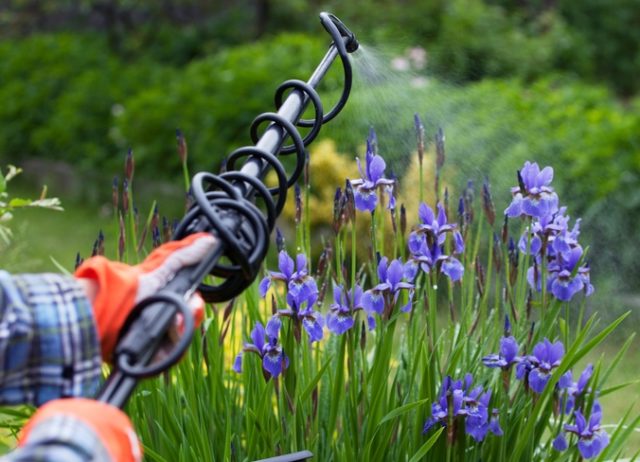
The most suitable period for pest control is the appearance of a flower arrow above the ground surface
If you are a little late with spraying, the effectiveness will be much lower.
Prevention measures
Prevention consists of transplanting the crop to another area, as well as digging up the soil and treating it with chemicals.
To prevent the larvae from overwintering, it is necessary to clear the area of fallen leaves to combat them. It is advisable to burn the litter away from the site.
Around the flowerbed with irises, you can plant flowers or herbs with a pungent odor (for example, marigold, marigold, rue, tansy, wormwood), which will repel insects.
Conclusion
Methods to combat iris fly include timely spraying with insecticides or herbal infusions. In addition, you can protect your plantings with the help of repellent plants. For preventive purposes, the soil under irises should be dug up annually. Periodically, the planting site can be changed and the soil treated with chemicals.


